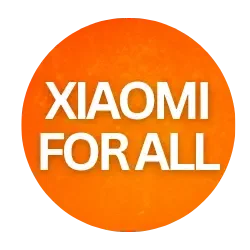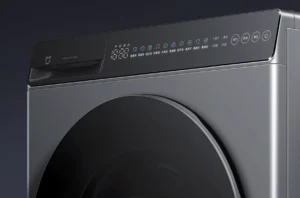Trump’s Tariffs Hit Xiaomi: Will Your Next Phone Cost More in the U.S.?
Donald Trump’s tariffs, effective as of April 9, 2025, have sent ripples through the global economy, leaving tech enthusiasts in the U.S. wondering: what’s next for Xiaomi phones? While Xiaomi isn’t a major player in the U.S. smartphone market, the new tariffs—a baseline 10% on all imports and a hefty 54% on Chinese goods—will impact the brand in both direct and indirect ways. In this article, we break down how these measures will affect Xiaomi devices, from pricing to availability, and what it means for Xiaomi fans in the U.S.

Trump’s Tariffs: A Quick Overview
The Trump administration has rolled out a 10% tariff on all imports to the U.S., with steeper rates for specific countries. For China, the tariff jumps to 54%, with potential increases to 79% if additional sanctions tied to Venezuelan oil purchases are enforced. These levies target physical goods like mobile phones and their components, raising costs for importers and often passing those increases onto consumers. So, how does this play out for Xiaomi?
Xiaomi in the U.S.: A Limited Footprint
Unlike giants like Apple or Samsung, Xiaomi doesn’t dominate the U.S. smartphone scene. The Chinese brand has historically focused on Asia, Europe, and emerging markets like India and Latin America, leaving the U.S. as a secondary priority. While Xiaomi does sell IoT devices (think robot vacuums, monitors, etc.) and accessories stateside, its phones typically reach U.S. consumers through unofficial channels like online purchases from AliExpress. This starting point shapes how the tariffs will hit the company.
Direct Impact on Xiaomi Phones
1. Made in China, Priced Out of Reach
Most Xiaomi phones are manufactured in China, though the company also has facilities in India and elsewhere. If Xiaomi tried importing phones directly to the U.S., they’d face a 54% tariff on each device’s value. For instance, a Xiaomi 14 priced at $500 elsewhere could balloon to over $770 with the tariff alone, not including additional import fees. This would make Xiaomi phones far less competitive against brands like Samsung or Apple, which offset costs by diversifying production.
2. Individual Imports Get Pricier
For U.S. fans importing Xiaomi phones unofficially, the tariffs now apply to packages under $800 from China. This hits platforms like AliExpress and Temu hard, driving up the cost of Xiaomi devices and diminishing their appeal as budget-friendly options. What was once a steal could now feel like a splurge.
3. Ripple Effect on Other Xiaomi Products
While phones aren’t Xiaomi’s U.S. stronghold, items like smart home devices and accessories are sold officially. With a 54% tariff, these products could see price hikes or slimmer profit margins, potentially prompting Xiaomi to rethink its U.S. strategy for these categories.
Indirect Impact: Beyond Borders
1. Shifting to Other Markets
Since the U.S. isn’t a core market for Xiaomi phones, the brand could redirect devices to regions like Europe or Latin America. This might flood those markets with supply, possibly lowering prices and benefiting consumers outside the U.S. Still, it hinges on Xiaomi’s ability to pivot logistics efficiently.
2. Component Cost Crunch
Xiaomi relies on U.S. companies like Qualcomm for phone processors. If tariffs complicate exports of these components to China or raise production costs, Xiaomi could see higher expenses trickle into global phone prices—even in markets unaffected by U.S. tariffs.
3. Tougher Competition
Brands like Samsung (manufacturing in South Korea and India, with 10% and 26% tariffs) and Apple (producing in India alongside China) gain a competitive edge in the U.S. This disparity makes it harder for Xiaomi to break into the American market under current conditions.
What This Means for Xiaomi Fans in the U.S.
If you’re a Xiaomi enthusiast in the U.S., the outlook isn’t rosy. Xiaomi phones will remain a rarity stateside, and those that make it here will likely cost more due to the 54% tariff. The silver lining? Xiaomi’s success doesn’t hinge on the U.S. The brand could double down on other regions, keeping prices competitive elsewhere.
For users of Xiaomi’s IoT products, expect potential price bumps or reduced variety. Planning to import a Xiaomi phone? Act fast or brace for a higher price tag—and consider alternatives from brands less impacted by China-specific tariffs.
Conclusion
Trump’s tariffs won’t spell doom for Xiaomi, but they’ll further limit its already slim U.S. phone presence. With a 54% levy on Chinese goods, Xiaomi devices will become pricier and less accessible to American consumers, while the company might shift focus to friendlier markets. For Xiaomi fans, enjoying their phones may mean looking abroad or paying a premium to import them.
Got a Xiaomi phone or thinking of getting one? Drop your thoughts in the comments and share this article with fellow Xiaomi lovers!






